

Note: This log entry is a living document. I'll be updating this post to reflect the current configuration as time goes on.. There will also be a log at the end of the post noting modifications to the log, etc..
UPDATED-----> 09.25.2014

This log entry will instruct you on building the Objective Lens Mount..
Tools Required:
- 1. Needle Nosed Pliers
- 2. 1.5mm Hex Driver
- 3. 5/64" Hex Driver
- 4. Philips Screwdriver
- 5. ESD Style Precision Tweezers
- 6. Nitrile Gloves
- 7. White Cotton Gloves
- 8. KimTech KimWipes
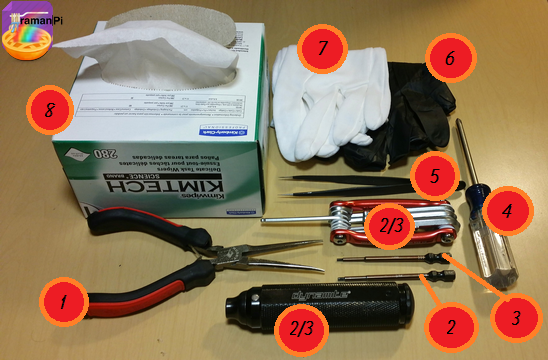
Components Required:
- Printed versions of the following 3D Printed Objects from the gitHub repository:
- (1x) 100x Microscope Objective Lens
- (6x) M2 - 0.45 12.9mm Socket Cap Screws
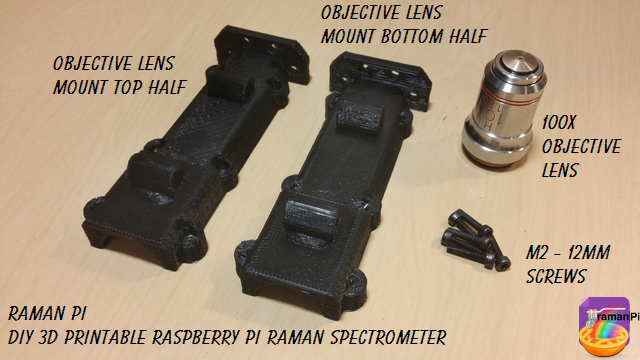
Steps:
1. Print and clean up the plastic parts. Be sure to use the 3D printed part guidelines. All spurs and supports need to be cleaned as much as possible.
2. Place Microscope Objective Lens in the lower half of the assembly on the objective lens end...
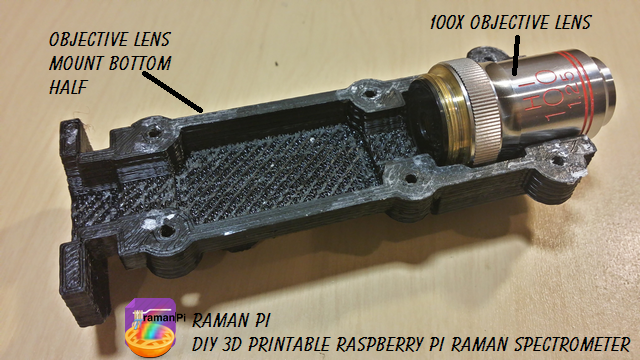
3. Place the screws in the screw holes and tighten in the following order...
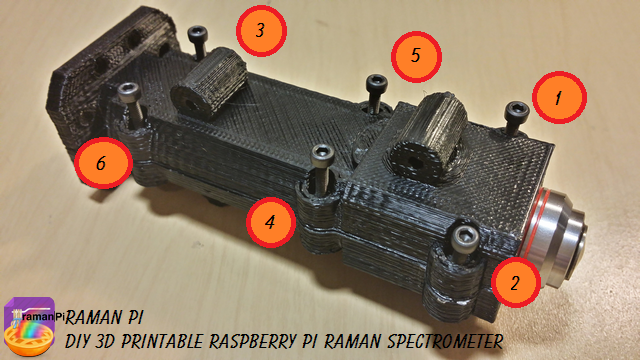
That completes this part!
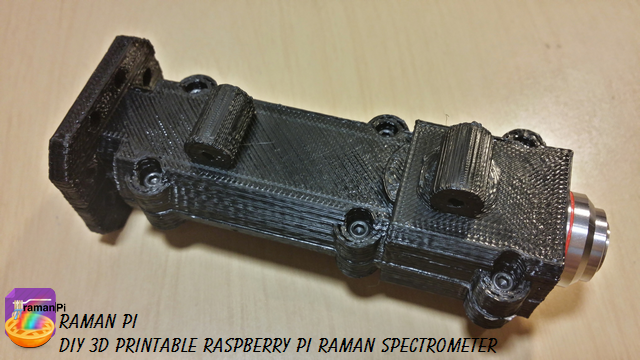
Set aside and move to next build!
You can close this tab or return to the build instructions here!

UPDATE LOG:
09.23.2014 - New Logo
09.25.2014 - Added Required Tools
09.25.2014 - New Photos
 fl@C@
fl@C@
Discussions
Become a Hackaday.io Member
Create an account to leave a comment. Already have an account? Log In.
Hi ,
Could you please give me a detail information about the type of objective lens used . The type of lens used in either ends of the objective .
Thanks in advance ^ ^
Are you sure? yes | no
great works. I am wondering if two objectives in series, one x100 and another x10 would give you x1000 mag? In microscope its the eye piece times objective piece give the combo mag.
Are you sure? yes | no
The objective is used here not for magnification but to focus the beam on the sample and in the reverse to collimate the light coming back into the system. Having two objective lenses in series would produce undesirable results..
Are you sure? yes | no
Hi, if not for magnification, so you are using x100 objective, can you use x10 instead? maybe cheaper?
Are you sure? yes | no
Techincally, you can use whichever you want.. =D I can't really comment on which is cheaper, since I haven't managed to establish a source for them yet... but again...it's really dependent upon your needs.. There are some calculations you can do that will resolve the advantage of the 100x vs. 10x and it's somewhere on horriba's website.. I don't have the link handy, but it shouldn't be hard to find..
Try emailing me here http://www.meridian-scientific.com/contact.html and I'll answer your questions.. It's getting a little confusing with multiple questions in multiple places.. :)
Are you sure? yes | no
Are you sure? yes | no
Hi Chris.. Apologies for the wait..Hopefully you're still interested.. Cleaning is pretty important.. Fingerprints and dust on the optics not only can cause problems with the output and so on.. And with the obvious side effects of fingerprints on the coatings for the optics.... and damage that can cause... but a 150mw laser might have the chance to heat the oils in the fingerprint causing serious damage, and possible not to just the optic that had the oil in the first place, but by deposition of whatever vaporized material on the other nearby optics...etc...etc.. the same for dust particles.. I would always wear the nitrile gloves under the white gloves while handling the optics.. and take special care not to touch the surfaces... and especially not the surface of the grating... just breathing on the grating can damage it..
As for cleaning... I don't think there is any way to clean a grating of this type.. at least I haven't seen any.. anything that comes into contact with the ruled grating is going to either deposit something or scratch it...
Other optics, lenses, etc... you should be able to get by with the kim wipes or a very high quality microfiber cloth... Take care to note that optics with coatings will be more sensitive and may have special handling requirements.. I wouldn't use kimwipes for things like the edge filters...I've seen a lot of discussion on this topic, but ultimately I think the best policy is to not touch the surface, and do your best to mitigate dust... If dust does get on the surface, a gentle blow from a lens cleaning bulb would be a good start..
So, aside from all that....Having dust and whatever on the optics will also hinder your ability to make effective measurements... think about oils on optics causing fluorescence or whatever other side effects there might be.. let alone the degradation of signal.. raman scattering produces such a minuscule return to start with, anything you can do to not inhibit that light making it to the ccd is all the better... =)
Hope that helps and isn't too late..
Are you sure? yes | no